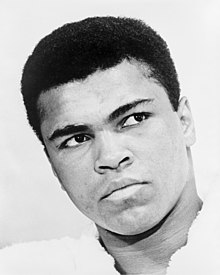After finally meeting President Obama last night, Ahmed Mohamed and
his family plan to leave the United States for the foreseeable future.
Schools from across the country have made offers to Ahmed since he
was arrested at Irving’s MacArthur High last month—his homemade clock
confused with a hoax bomb, transforming him into a symbol of perceived
anti-Muslim bias.
But apparently it was an offer from the Middle East that most
intrigued the family. The Mohameds announced today that they’ve accepted
a foundation’s offer to pay for the 14-year-old’s high school and
college in Doha, Qatar, which Ahmed visited a few weeks ago as he began a
world tour.
His sister, Eyman Mohamed, said Ahmed will study at Doha Academy,
while she and his other siblings find schools in the rich capital city,
which hosts a huge university complex called Education City.
“Looking at all the great offers we’ve had, it’s the best decision,”
said Eyman, 18. “They even have Texas A&M at Qatar … It’s basically
like America.”
She spoke as the family boarded an airplane from Washington, where
Ahmed concluded his world tour at the White House this week, back to
their smallish house in Irving.
But they’ll only be here for a few days, Eyman said, before they jet off to a new life on the other side of the world.
Not that their story in the United States is done. Before leaving Washington, Ahmed appeared with a U.S. Congressman
who, along with nearly 30 other members of congress, have asked the
federal government to investigate whether anti-Muslim discrimination
prompted Ahmed’s arrest.
Meanwhile, Ahmed has become a villain—dubbed “Clock Boy”—on right wing websites that claim the family has Islamist ties
and plotted his celebrity. There’s been zero evidence shown for those
conspiracy theories, though Ahmed probably didn’t help his optics by meeting last week with Omar al-Bashir, dictator of the country he was born in and an accused war criminal.
“We are going to move to a place where my kids can study and learn
and all of them being accepted by that country,” said Ahmed’s father,
Mohamed Elhassan Mohamed, before he got off the phone and stepped onto
the airplane.
The family’s full statement follows.
When Grant Wacker found he needed to explain to his Duke Divinity School students who Billy Graham was, he realized a quick biography was not enough. He would have to explain why Graham mattered.
His book “America’s Pastor,” does just that, considering why the 96-year-old evangelist became one of the most successful celebrity preachers ever.
Wacker, a historian who specializes in evangelicalism, Pentecostalism and American Protestant thought, is perfectly suited to the task. Biographies of Graham abound, and they have been polished to a patina by no less an organizational powerhouse than the Billy Graham Evangelistic Association. But as Graham, who retired in 2005, recedes farther from the stage, many who are unfamiliar with the Protestant religion of the heartland or the cultural grievances and aspirations of middle America, may puzzle about Graham’s role and influence. He was not a profound speaker. He often spoke in platitudes. He never digressed from a set, predictable sermon outline whose ultimate goal was the conversion of the individual. Yet that was also his genius.
For many ordinary Americans, Wacker writes, Graham’s theology cohered. “It explained their experiences and enabled them to paint their lives onto a grand canvas. It cemented the convictions that he told the truth, not just about this or that particular thing, but also about reality itself.”
In chapters examining Graham’s preaching, his entrepreneurial abilities, his role as America’s patriarch, Wacker demonstrates that Graham displayed an ability to speak to a wider culture about the events of the day and offer a solution centered on faith in Jesus Christ. Whether it was the rise of civil rights, the dread of nuclear war or the challenges of religious pluralism, Graham offered a moral compass in unsettling times.
Unlike earlier evangelicals who exhorted their audience to give up smoking, drinking and dancing, Graham looked to bigger sins: greed, lust, racism. And he offered people a second chance. To evangelicals, that meant being “born again,” but Graham was able to transcend the insider-speak. “Allow … Christ to give you a brand-new start,” he wrote once. His audience responded.
Wacker’s decision to divide the book into thematic chapters means that parts of Graham’s biography are rehashed in each. We hear numerous times of Graham’s 1957 Madison Square Garden event, which ran 16 weeks and drew an estimated 2.4 million people, and President Bill Clinton’s impressions of the 1959 Little Rock, Ark., crusade, for example.
Still, Wacker is nothing if not exhaustive in his study of archival and other source material, including attendance records at Graham events, media reports and honors. His writing is accessible and vivid. And he takes a great deal of care in fleshing out the nuances of Graham’s life and sketching the ways Graham emerged out of the fundamentalist movement and came to reshape the contours of American evangelicalism to the degree that he became a spokesperson for an American Protestantism committed to Jesus but tolerant and peaceful toward others.
Neither do Wacker’s insights overlook criticism of Graham, especially in the area of race. As a son of the South, Graham could have done more to address the intolerable effects of racial injustice. He did not march in the streets or go to jail. Instead, like other Southern evangelicals, he was a cautious reformer. He integrated his crusades as early as 1953, and later invited black performers and evangelists to share the stage. Wacker doesn’t sugarcoat Graham’s shortcomings, but this is, for the most part, a sympathetic portrayal of a preacher who helped a subgroup of devout Christians move from the sidelines to the center.
Yonat Shimron is former religion reporter for The News & Observer.
His book “America’s Pastor,” does just that, considering why the 96-year-old evangelist became one of the most successful celebrity preachers ever.
Wacker, a historian who specializes in evangelicalism, Pentecostalism and American Protestant thought, is perfectly suited to the task. Biographies of Graham abound, and they have been polished to a patina by no less an organizational powerhouse than the Billy Graham Evangelistic Association. But as Graham, who retired in 2005, recedes farther from the stage, many who are unfamiliar with the Protestant religion of the heartland or the cultural grievances and aspirations of middle America, may puzzle about Graham’s role and influence. He was not a profound speaker. He often spoke in platitudes. He never digressed from a set, predictable sermon outline whose ultimate goal was the conversion of the individual. Yet that was also his genius.
For many ordinary Americans, Wacker writes, Graham’s theology cohered. “It explained their experiences and enabled them to paint their lives onto a grand canvas. It cemented the convictions that he told the truth, not just about this or that particular thing, but also about reality itself.”
In chapters examining Graham’s preaching, his entrepreneurial abilities, his role as America’s patriarch, Wacker demonstrates that Graham displayed an ability to speak to a wider culture about the events of the day and offer a solution centered on faith in Jesus Christ. Whether it was the rise of civil rights, the dread of nuclear war or the challenges of religious pluralism, Graham offered a moral compass in unsettling times.
Wacker’s decision to divide the book into thematic chapters means that parts of Graham’s biography are rehashed in each. We hear numerous times of Graham’s 1957 Madison Square Garden event, which ran 16 weeks and drew an estimated 2.4 million people, and President Bill Clinton’s impressions of the 1959 Little Rock, Ark., crusade, for example.
Still, Wacker is nothing if not exhaustive in his study of archival and other source material, including attendance records at Graham events, media reports and honors. His writing is accessible and vivid. And he takes a great deal of care in fleshing out the nuances of Graham’s life and sketching the ways Graham emerged out of the fundamentalist movement and came to reshape the contours of American evangelicalism to the degree that he became a spokesperson for an American Protestantism committed to Jesus but tolerant and peaceful toward others.
Neither do Wacker’s insights overlook criticism of Graham, especially in the area of race. As a son of the South, Graham could have done more to address the intolerable effects of racial injustice. He did not march in the streets or go to jail. Instead, like other Southern evangelicals, he was a cautious reformer. He integrated his crusades as early as 1953, and later invited black performers and evangelists to share the stage. Wacker doesn’t sugarcoat Graham’s shortcomings, but this is, for the most part, a sympathetic portrayal of a preacher who helped a subgroup of devout Christians move from the sidelines to the center.


